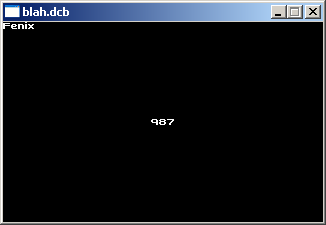- This wiki is out of date, use the continuation of this wiki instead
Write var
From FenixWiki
(Difference between revisions)
Revision as of 21:36, 24 July 2007
Contents |
Definition
INT write_var ( <INT fontID> , <INT x> , <INT y> , <INT alignment> , <VARSPACE var> )
Writes a variable of any kind to the screen, which will be automatically updated when the value of the variable changes. The variable will remain on the screen until deleted with delete_text().
Parameters
| INT fontID | - The FontID of the font to be used for the text. |
| INT x | - The X coordinate of the text. |
| INT y | - The Y coordinate of the text. |
| INT alignment | - The type of alignment. |
| VARSPACE var | - The name of any variable. Please note that this should not be a pointer, while write_int()/write_string()/write_float() do require a pointer. |
Returns
INT : TextID
| 0 | - Error. The text could not be obtained or was empty. |
| !0 | - The TextID of the text. |
Notes
There is a limit of 511 texts to simultaneously exist on the screen. The program will crash with an error when this number is reached.
The text depth can be changed by adjusting the global variable text_z.
Instead of write_var(), write_int() could be used to write an int to the screen, write_string() for a string, write_float() for a float.
Errors
<If someone knows, please edit!>
Example
Program test;
Global
My_integer=0;
string My_string="Fenix";
Begin
Write_var(0,0,0,0,My_string);
Write_var(0,320/2,200/2,4,My_integer);
Loop
My_integer=rand(1,1000);
Frame;
End
End
Used in example: rand()

